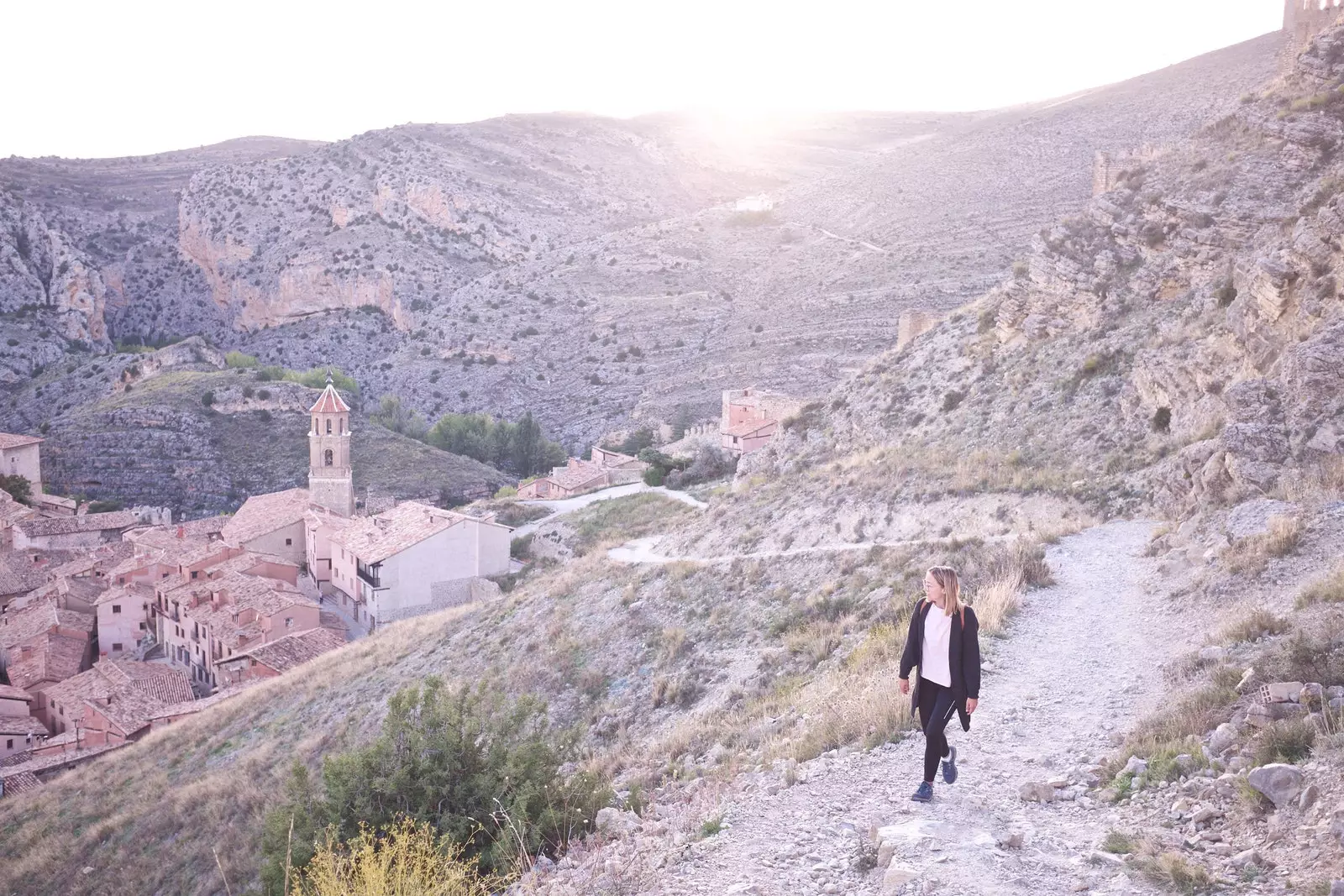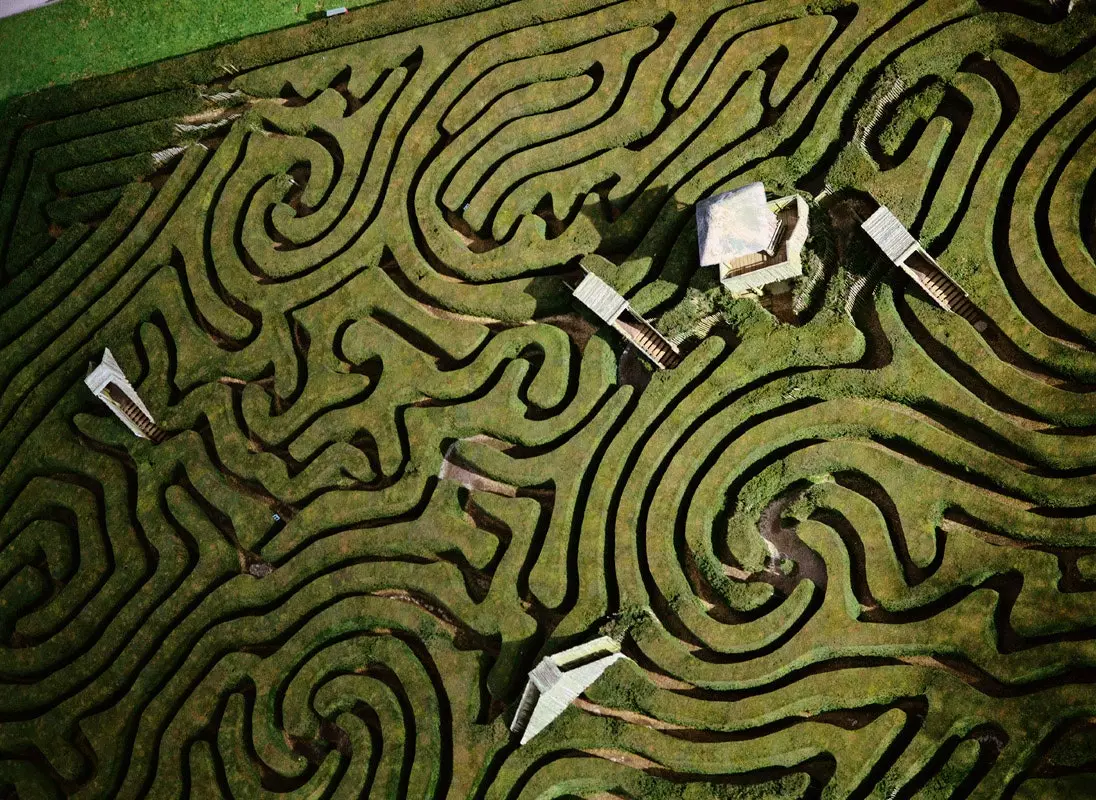
Theory and practice of the walk
The ride is more than just getting your legs moving. There are those who perceive it as a capricious wandering and those who consider it an activity that transcends the physical to come into direct contact with our intellectual dimension.
For some it is art and for others it is science. It is possible to theorize about the walks, and methods have even been established and rules written to practice them. Philosophers, writers and artists of the past integrated walking into their work routine. Nowadays, walking for the sake of it is a slow way of understanding a world that spins too fast.
WE MOVE THE BODY TO UNCLOG THE MIND
This very human habit of going for a walk dates back to the Paleolithic. Almost four million years ago a group of hominids left the footprint of the oldest walk in history in Laetoli, Tanzania. The anthropologist Mary Leakey, the discoverer of it, determined in 1976 that those were the footprints of some walkers who walked calmly.
Our ancestors walked to survive, while the current human being takes a step and then the next because that is what the body or the head asks. We are still nomads, although the motivation to walk has evolved as the species did.

It is preferable to wander with a goal.
life goes forward and we move forward with it. This is how our instinct to wander explains Claudia Martínez, a health psychologist specializing in Experiential Humanist Psychotherapy, Emotion-Focused Therapy and child-juvenile Gestalt at the Nascencia Psicología clinic. “Understanding this concept we will understand that it is not possible to stop, and, consequently, neither does our energy”, she explains her.
The energy is channeled through movement and renews us physically and mentally. “When we walk we are receiving new and varied stimuli that we cannot predict” , deepens Martinez. "Thus, our brain integrates this new information, generating new ways of thinking and abandoning old loops."
The writer Javier Mina, author of Proust's Dilemma or The Walk of the Wise (Berenice, 2014) also believes that the possibility of being surprised is inherent to wandering: “Walking is an emotional and conscious act, that uses sensory information elicited by the context. Anything that short-circuits any of the sensory channels destroys the ride." It wouldn't be worth it then to wiggle your feet without paying attention to the environment.
Novelty is the mother of inspiration. “If we turn walking into another routine and we always walk through the same places, we will not be exposing ourselves to new situations that allow us to generate new thoughts and sensations”, concludes the psychologist.

The walk must be conscious and alone.
THE PHILOSOPHERS WHO DID NOT STOP STILL
Some of the most important figures in philosophy were static. Descartes modeled his ideas in the heat of a stove from which he was rarely separated, Montaigne cloistered himself in a tower, and Heidegger and Wittgenstein retired to separate cabins because they thought better indoors. The surprise and novelty of rides were not his thing.
But More notorious were the thinkers who philosophized outdoors and in motion. Socrates and Aristotle in Greece, Nietzsche in Germany, Kierkegaard in Denmark.
Seneca went through Rome, curiously, lying on a litter. Mina approves of these walks horizontally because in this way the philosopher dispensed with his companions: “Walking is an act of solitude. Going alone is how the walker gets in touch with what surrounds him. From there, a feedback loop is established between the walker and an environment that will return impressions so that they return to it with new perspectives”.
Mina's opinion proves that everyone has their own conception of the walk and establishes conditions to put it into practice that can be more or less strict. There are examples of iron discipline such as Kant, who went for a walk every day with robotic punctuality; and the more current group Homo Velamine, in whose “ultra-rational wanderings” the city of Madrid has been walked stop by metro stop.

In 'The School of Athens' Raphael painted Plato and Aristotle walking in search of the truth.
There are also walk schools based on other principles, including that of André Breton and the surrealists in his Dada visit from the 1920s, a specific type of wandering located in the most banal corners of Paris and based on the oneiric component of walking. It was a “conscious aesthetic operation”, as described by Francesco Careri in his book Walkscapes. Walking as an aesthetic practice (Gustavo Gili, 2002).
The wandering of the surrealists had its extension in Guy Debord's Theory of Drift and the Situationists in the 1950s, "a collective playful activity that not only aims at defining the unconscious zones of the city, but also It is proposed to investigate, based on the concept of psychogeography, the psychic effects that the urban context produces in individuals”, in the words of Careri.
In solitude, like Seneca, or in company, like Socrates? In unknown territories, like the surrealists, or in the heart of the city, like the situationists? It depends on the reason that drives you. “The walks can have different objectives, but the important thing is to know what objective we have at each moment when we go out for a walk”, explains Martínez.

The Dadaists turned the ride—at least one—into a work of art.
THOUGHT IS DEMONSTRATED BY WALKING
Ramón del Castillo is a philosopher and also a stroller. In his book Philosophers for a walk (Turner, 2020) he uses humor to demystify the figure of the meditative man with a suit, hat and cane who concocts his theories in the middle of the field. “Sometimes philosophers come up with things while walking, but not playing the role of solemn walker”, says the writer.
The walking philosophers were not outside the world, and their works relate both to their walks and to the times they lived in, the society they were part of, their gender (Simone de Beauvoir, for example, also walked), and the spaces they inhabited. "You can't understand what they do walking around if you don't also understand where they isolate themselves and how they conceive the interiors," says del Castillo.
Another guild very much given to putting walks at the service of his work is that of writers. Dickens, Valle-Inclán, Pessoa, Baudelaire and Woolf transferred their excursions to paper. The writer Rebecca Solnit has already found parallels between the writing style of some authors and the cadence of their steps. Del Castillo illustrates this similarity by explaining that Coleridge's poetry is like entering the thicket of some bushes.
In philosophy it is not so easy to detect these similarities, although there are some cases: Nietzsche's aphorisms are comparable to climbing a hill or turning a curve. But the true heritage of walks in this discipline has more to do with its **influence on the authors' vision of issues such as nature, industry and culture. **

There are parallels between the writing style of some authors and the cadence of their steps.
WALKING BECAUSE YES, THAT PENDING SUBJECT
It is easier to study the walking philosopher than to decide to take a walk of your own free will and for no other purpose than to enjoy the ride. “We are not in the habit of going out alone. It is a prejudice in our culture there is a tendency to think that if you go alone it is because you cannot be accompanied. And that's a lie: there are people who walk alone because they have the need to do so, not because something is missing,” says del Castillo.
Sergio C. Fanjul, journalist and poet, is a benchmark in the noble matter of walking just because. Self-proclaimed Official Town Walker in 2018, he explored the 21 districts of Madrid on foot to collect his experience in The Infinite City (Reservoir Books, 2019). He agrees with the writer that few people walk for the sake of walking, and to this he adds another idea: "The urban space is not designed to walk and be in it, but to carry out consumption or work activities."
If the walk does not imply consuming, is it a subversive act? “That's a bit bombastic, because you're not going to change the world. But on an individual level, of course it is,” Fanjul thinks. “It is not an anti-system activity, but it is outside the system.” Along the same lines, del Castillo says: "You don't even go to the gardens to consume, but to do, do, do: tai chi, reiki, mindfulness, therapy... There is no longer the custom of sitting on a bench to kill the afternoon".
In view of the benefits of walking for pleasure, action should be taken to change this mentality. “The walk is good for the body and the mind. Many times walking I enter a state of meditation in which thoughts pass through my head without noticing”, says Fanjul. “I let my mind flow without obsessions and living in the present moment. The walk dilates a lot of time and it seems that it spreads more”.
Walking helps us channel the energy that moves us, it expands the frontiers of our perspective and even alters the senses: “Everyone associates it with sight, but walking changes one's hearing. Islands of silence are generated”, reflects del Castillo.

If you feel the need to go for a walk alone, do it.
